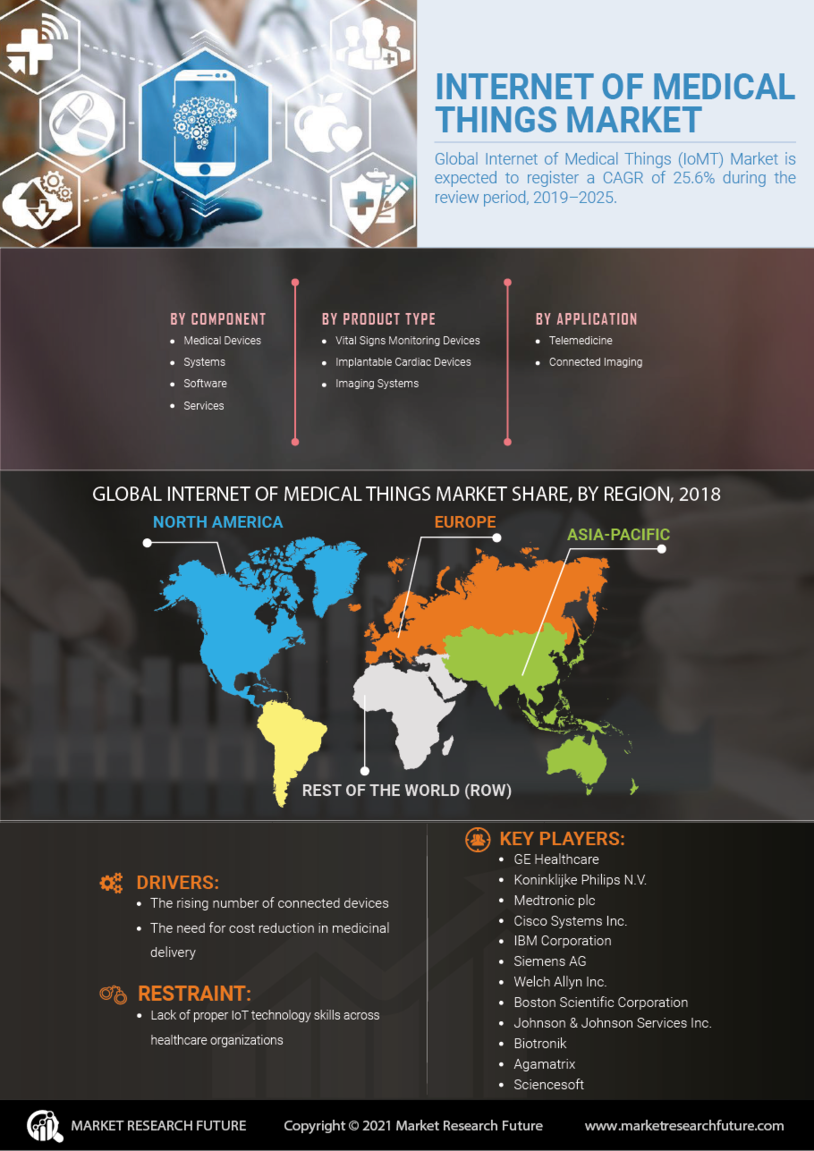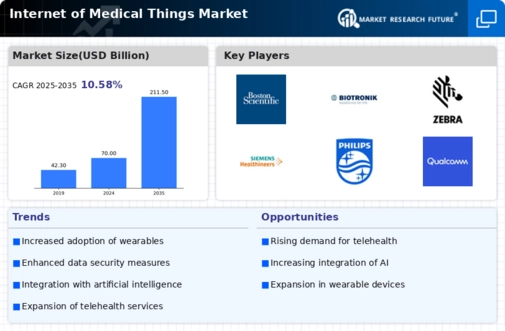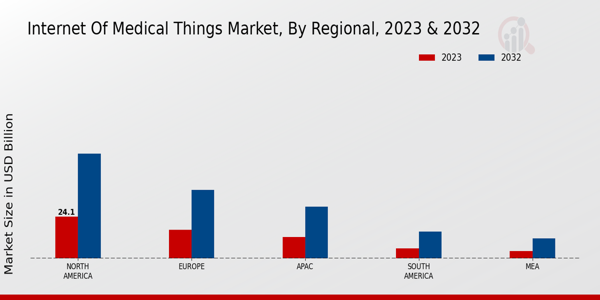Growing Aging Population
The Global Internet of Medical Things Market Industry is significantly influenced by the growing aging population. As individuals age, they often experience multiple chronic conditions that require ongoing management. IoT devices, such as health monitoring wearables and telehealth solutions, are increasingly utilized to support this demographic. These technologies enable elderly patients to receive care in the comfort of their homes, thereby reducing the burden on healthcare facilities. The increasing adoption of these solutions is expected to drive market growth, aligning with the overall upward trend in the industry.
Market Growth Projections
The Global Internet of Medical Things Market Industry is projected to experience substantial growth over the coming years. With a market valuation of 70.0 USD Billion in 2024, it is anticipated to reach 211.5 USD Billion by 2035. This growth trajectory reflects a compound annual growth rate of 10.57% from 2025 to 2035. Such projections underscore the increasing integration of IoT technologies in healthcare, driven by factors such as enhanced patient monitoring, improved device connectivity, and a focus on patient-centric care. The market's expansion is indicative of the broader transformation occurring within the healthcare landscape.
Increased Focus on Patient-Centric Care
The Global Internet of Medical Things Market Industry is witnessing a paradigm shift towards patient-centric care. Healthcare providers are increasingly prioritizing personalized treatment plans that cater to individual patient needs. This shift is supported by IoT-enabled devices that collect and analyze patient data, allowing for tailored interventions. For instance, smart glucose monitors provide real-time feedback to diabetic patients, empowering them to manage their condition effectively. As healthcare systems embrace this model, the demand for IoT solutions is expected to grow, aligning with the projected CAGR of 10.57% from 2025 to 2035.
Advancements in Medical Device Connectivity
Advancements in connectivity technologies are propelling the Global Internet of Medical Things Market Industry forward. Innovations in wireless communication, such as 5G, enable seamless data transmission between medical devices and healthcare systems. This connectivity facilitates the integration of various medical devices into a cohesive ecosystem, enhancing data accuracy and accessibility. For example, smart infusion pumps can now communicate with electronic health records, ensuring that patient data is up-to-date and readily available. Such advancements are likely to contribute to the market's growth, with projections indicating a rise to 211.5 USD Billion by 2035.
Rising Demand for Remote Patient Monitoring
The Global Internet of Medical Things Market Industry is experiencing a surge in demand for remote patient monitoring solutions. This trend is driven by the increasing prevalence of chronic diseases, which necessitate continuous health monitoring. For instance, wearable devices that track vital signs are becoming commonplace, allowing healthcare providers to monitor patients in real-time. This shift not only enhances patient outcomes but also reduces hospital readmissions. The market is projected to reach 70.0 USD Billion in 2024, indicating a robust growth trajectory as healthcare systems increasingly adopt these technologies.
Regulatory Support for Digital Health Innovations
Regulatory bodies are increasingly supporting digital health innovations, which is beneficial for the Global Internet of Medical Things Market Industry. Governments are implementing frameworks that encourage the development and deployment of IoT technologies in healthcare. For example, initiatives aimed at streamlining the approval process for digital health devices are gaining traction. This regulatory support not only fosters innovation but also enhances patient safety and data security. As a result, the market is likely to expand, with significant investments flowing into IoT healthcare solutions.











